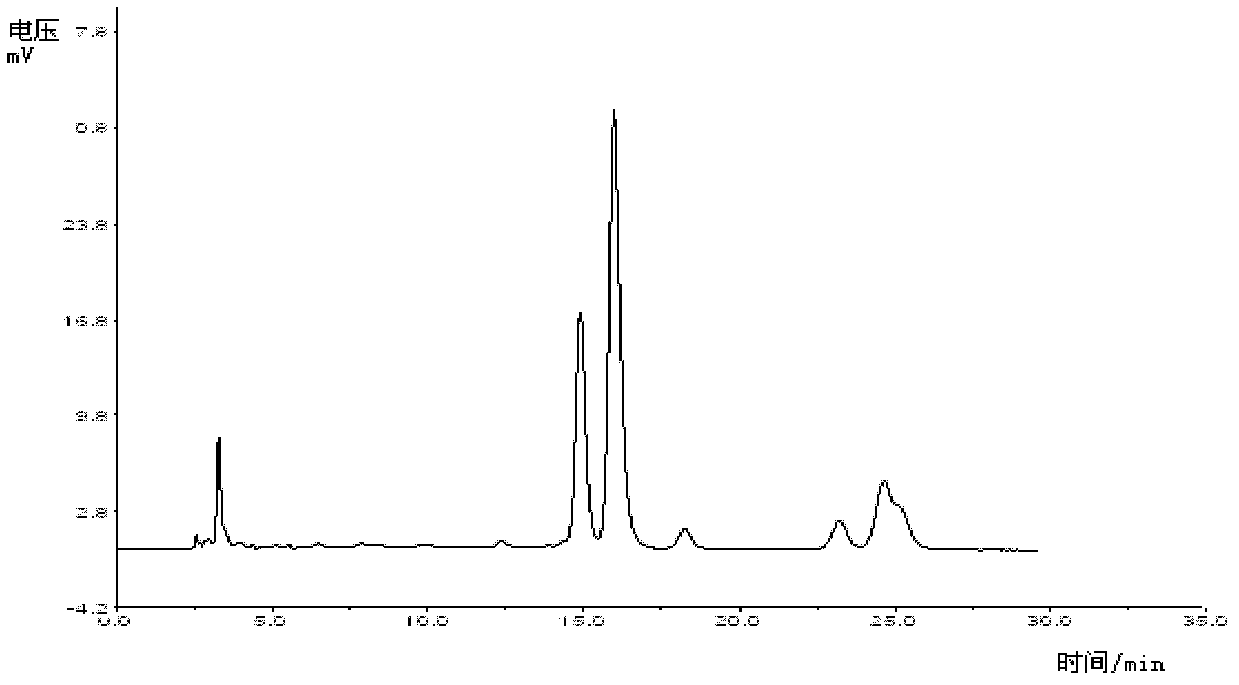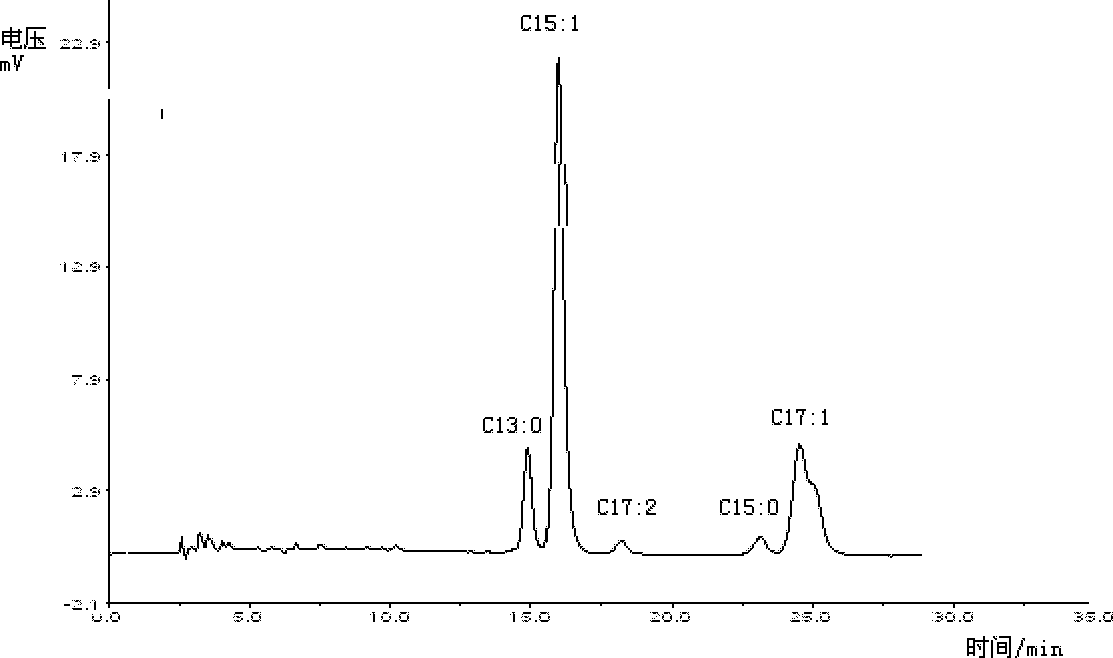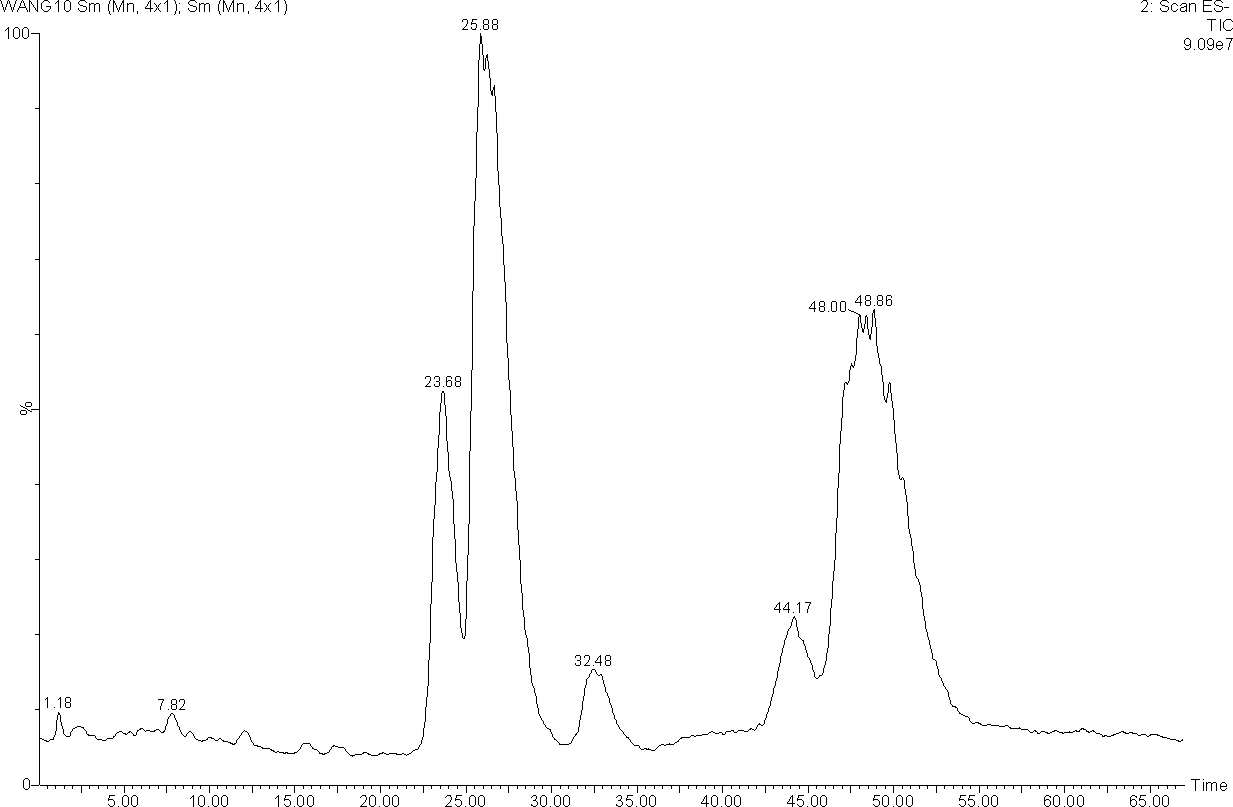Application of ginkgolic acid in killing of blue-green algae
A technology of ginkgolic acid and blue-green algae, applied in the fields of application, biocide, and chemicals for biological control, etc., can solve the problems of less research on terrestrial plants, and achieve drug resistance, environmental friendliness, and simple use methods Effect
- Summary
- Abstract
- Description
- Claims
- Application Information
AI Technical Summary
Problems solved by technology
Method used
Image
Examples
Embodiment 1
[0070] 1. Experimental steps
[0071] (1) Extraction and preliminary separation of test samples
[0072] Under normal temperature conditions, 20kg of Ginkgo biloba exocarp crushed material was extracted with absolute industrial ethanol (200L) at 75°C under reflux for 3 times, each time for 2h, the extracts were combined and concentrated under reduced pressure to obtain 6640g of ethanol extract. Then the obtained ethanol extract is extracted 3-5 times with an equal volume of sherwood oil, until the extract is almost colorless, the extract is concentrated under reduced pressure to obtain 3276g of sherwood oil extract, the extraction rate is 49.3% by weight, and the remaining residue is 3300g .
[0073] (2) Separation of petroleum ether extract
[0074] (a) Sample handling
[0075] Take 100g of petroleum ether extract extract, dissolve it in methanol, add 100g of silica gel, mix well, put it in a constant temperature water bath (temperature 50°C), evaporate to dryness, and gri...
Embodiment 2
[0103] B-2 grouped samples (wherein, the content of ginkgolic acid is 96.70% by weight) were tested for algicidal activity according to the above-mentioned method.
[0104] The algicidal experiment results (expressed as algae inhibition rate) were counted on the 3rd day and the 7th day respectively. Table 1 shows the results of algae inhibition experiments of different concentrations of B-2 stream grouping samples.
[0105] Table 1
[0106]
[0107] Calculate the LC on the 3rd and 7th day according to the algal inhibition rate on the 3rd and 7th day 50 They are 4.25mg / L and 3.41mg / L respectively.
[0108] The above results indicate that the B-2 subgroup sample, ie, ginkgolic acid has excellent killing activity against Microcystis aeruginosa.
Embodiment 3
[0110] Take 10.0 kg of dried Ginkgo biloba testa and grind it to 30-60 mesh. Use industrial methanol to reflux extraction, pressurize and concentrate to obtain a fluid extract, fully volatilize the methanol, stir and dissolve with industrial ethanol, take the supernatant, and remove sediment sugar, starch and other impurities. After concentrating the supernatant, dissolve and extract with petroleum ether, remove the residue, concentrate the extract to extract A, and use the HPLC method in Example 1 to measure the content of ginkgolic acid in this extract A to be 40% by weight.
[0111] Mix 62.5 volumes of extract A and 25 volumes of methanol evenly, add 12.5 volumes of emulsifier, and stir vigorously to obtain algicide A. When in use, first dilute the algicide A with 1000 times of water, and then sprinkle the whole pool, the volume of the algicide A per cubic meter is 1-3mL.
PUM
 Login to View More
Login to View More Abstract
Description
Claims
Application Information
 Login to View More
Login to View More - R&D
- Intellectual Property
- Life Sciences
- Materials
- Tech Scout
- Unparalleled Data Quality
- Higher Quality Content
- 60% Fewer Hallucinations
Browse by: Latest US Patents, China's latest patents, Technical Efficacy Thesaurus, Application Domain, Technology Topic, Popular Technical Reports.
© 2025 PatSnap. All rights reserved.Legal|Privacy policy|Modern Slavery Act Transparency Statement|Sitemap|About US| Contact US: help@patsnap.com



